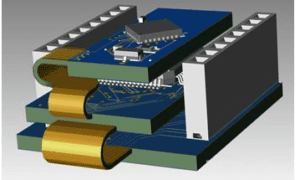Flexible printed circuit boards (PCBs) have gained popularity in recent years due to their unique properties and versatility. They offer many advantages over traditional rigid PCBs, including their ability to bend, twist, and flex without breaking or losing connectivity.
However, they also have some limitations that must be considered before choosing them for your project. In this blog post, we will explore the benefits and limitations of flexible PCBs to help you decide if they are the right choice for your project.
Benefits of Flexible PCBs:
Space-saving: Flexible PCBs can be manufactured to fit into small spaces and tight corners, making them ideal for use in small devices. ELE PCB is one of the largest PCB manufacturers.
Weight-saving: They are also lightweight, making them an excellent choice for portable devices and products that require low weight.
Cost-effective: Due to their simple manufacturing process and the use of fewer materials, they can be produced at a lower cost compared to rigid PCBs.
High Durability: Flex PCBs are much more durable than rigid PCBs due to their ability to bend and twist without breaking. This makes them ideal for use in products that require frequent movement or flexing.
High-Speed Design: Flexible PCBs are suitable for high-speed designs due to the shorter signal paths, lower capacitance, and inductance that they offer.
In addition to the benefits discussed above, flexible PCBs offer several other advantages that make them a popular choice for certain applications. For example, they can be used to create intricate and curved designs that would be impossible with rigid PCBs. This allows for more creative and innovative designs in areas such as wearable technology, medical devices, and automotive electronics.
Flexible PCBs also offer increased reliability due to the elimination of mechanical connectors that can fail over time. With flexible PCBs, there are no solder joints or connectors that can wear out, reducing the risk of component failure and improving product longevity.
Another advantage of flexible PCBs is that they can be manufactured in a variety of shapes and sizes, including circular and irregular shapes. This allows for more customization in design and can be useful in products that require a specific form factor.
Limitations of Flexible PCBs:
Limited Component Placement: Flexible PCBs have a limited range of component placement options, making them unsuitable for some complex designs.
Design Complexity: Designing a flexible PCB can be challenging due to the requirement for a specific bend radius and strict material constraints.
High Impedance: The material used in flexible PCBs can have a high impedance, making them unsuitable for high-frequency applications.
Heat Dissipation: Flexible PCBs have limited heat dissipation capabilities, making them unsuitable for high-power applications.
Cost: While they can be cost-effective for small designs, larger and more complex designs can be expensive due to the additional material and design requirements.
Despite the limitations discussed earlier, advances in flexible PCB technology have improved their performance and expanded their range of applications. For example, new materials such as polyimide and liquid crystal polymer (LCP) have been developed, providing better thermal stability and improved signal integrity for high-frequency applications.
In terms of manufacturing, advances in technology have made it possible to produce flexible PCBs using a variety of methods, including roll-to-roll printing, laser cutting, and digital printing. This has reduced production time and costs, making flexible PCBs more accessible to a wider range of industries.
Conclusion:
Flexible PCBs offer many benefits for smaller and simpler designs, including space and weight savings, cost-effectiveness, and high durability. However, they also have some limitations that must be considered before selecting them for larger or more complex designs. It is essential to evaluate the specific requirements of your project to determine whether flexible PCBs are the right choice for you.
Overall, flexible PCBs offer many benefits for specific applications, including space and weight savings, increased reliability, and more design flexibility. However, their limitations must also be taken into consideration when selecting them for a project. By carefully evaluating the specific requirements of your project, you can determine whether flexible PCBs are the right choice for you.































